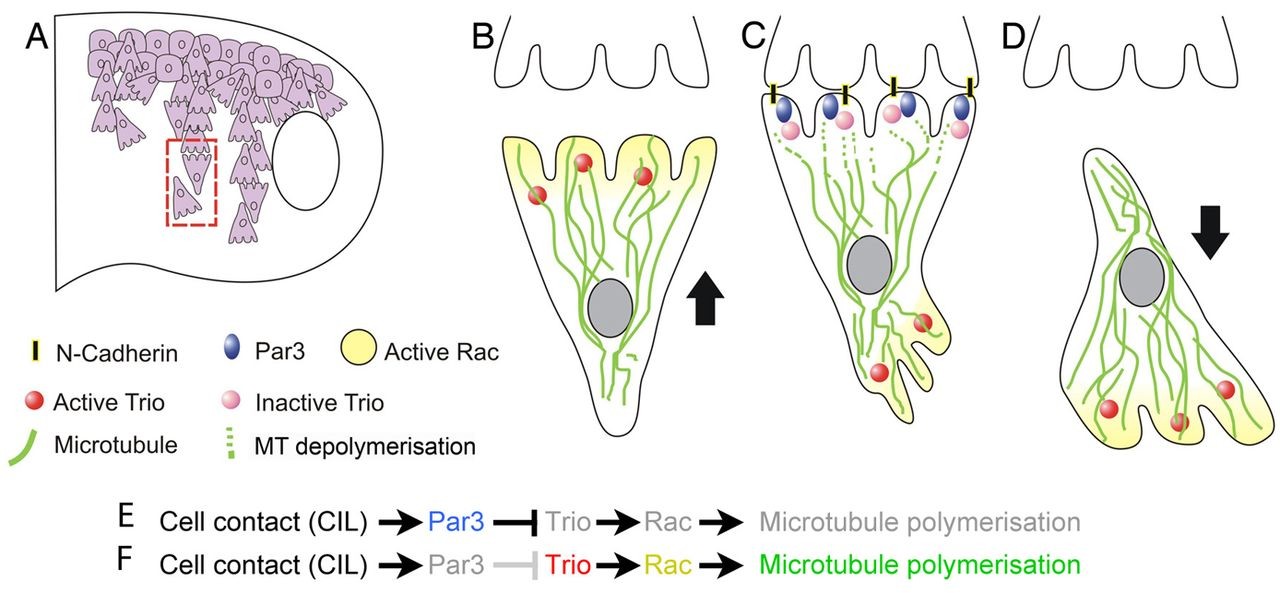Par3 controls neural crest migration by promoting microtubule catastrophe during contact inhibition by locomotion
There is growing evidence that contact inhibition of locomotion (CIL) is essential for morphogenesis. The failure of CIL is thought to be responsible for cancer invasion. The molecular bases of this phenomenon are poorly understood. Here, Moore et al. investigate the role of the polarity protein Par3 in CIL during migration of the highly migratory cell population of the neural crest. In epithelial cells, Par3 is localised to the cell-cell adhesion complex and is important in the definition of apicobasal polarity. The localisation and function of Par3 are not well characterized in mesenchymal cells.
In this study, Xenopus and zebrafish Par3 was found to be located at the cell-cell contact in neural crest cells and is essential for CIL. The dynamics of microtubules are different within the migratory cell, with an increase in microtubule catastrophe at the cell-cell collision site during CIL. Par3 loss-of-function affects neural crest migration by reducing microtubule catastrophe at the site of cell-cell contact, abrogating CIL. In addition, Par3 promotes microtubule catastrophe by inhibiting the Rac-GEF Trio. Double inhibition of Par3 and Trio restores microtubule catastrophe at the cell contact and rescues neural crest migration and CIL. Their results demonstrate a novel role of Par3 during neural crest migration, which could be conserved in other processes such as cancer invasion or cell dispersion that involve CIL.
Image published in: Moore et al. (2013)
Last Updated: 2014-02-04
